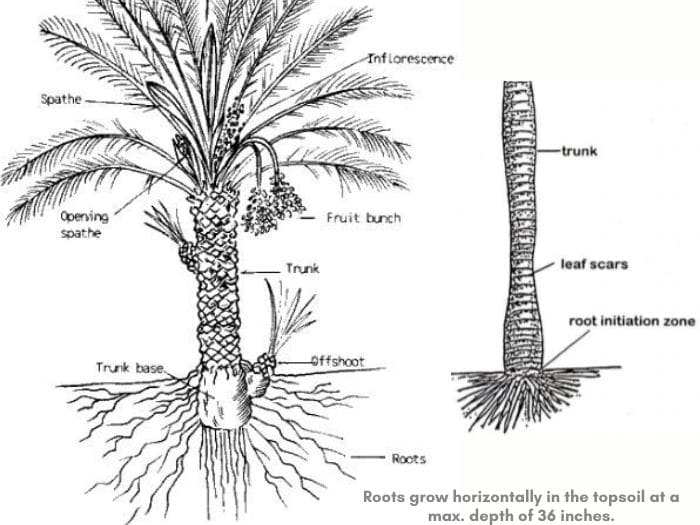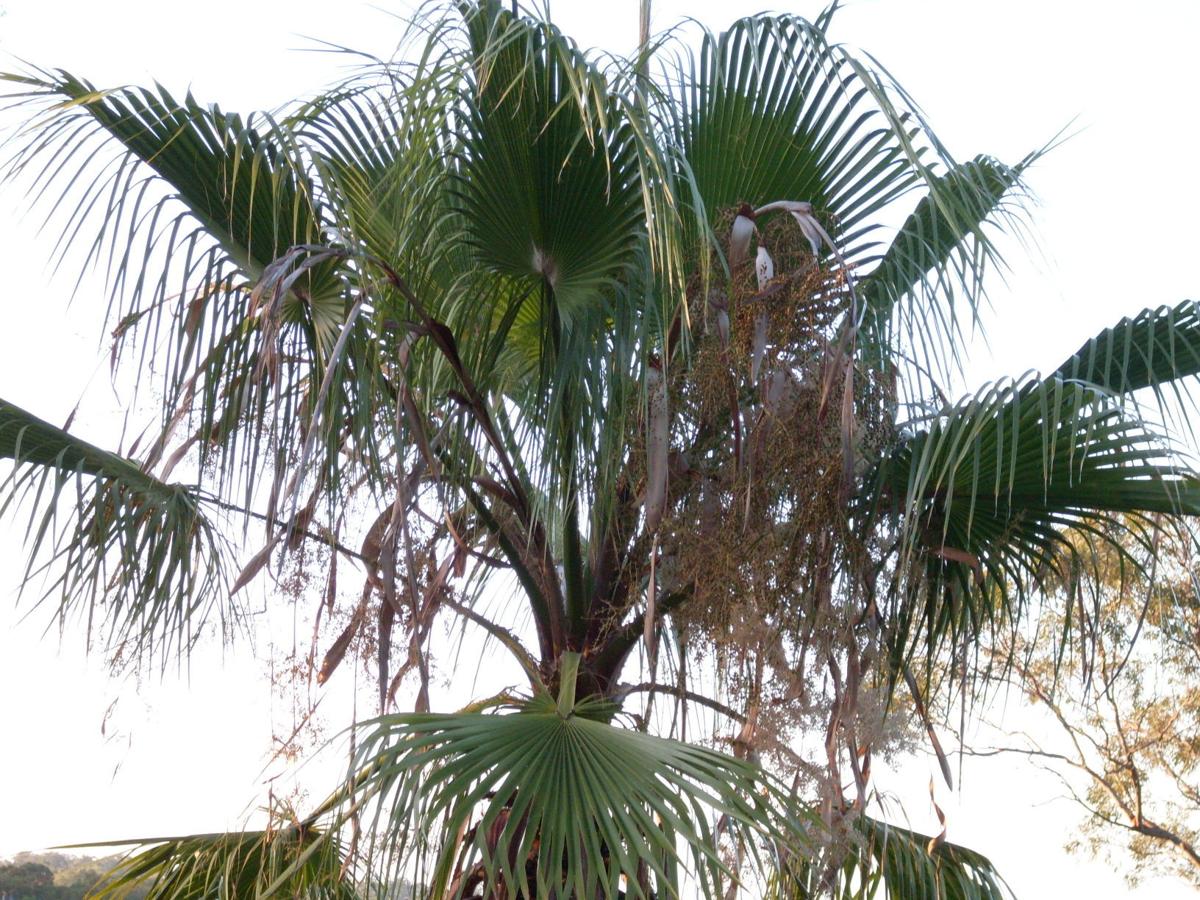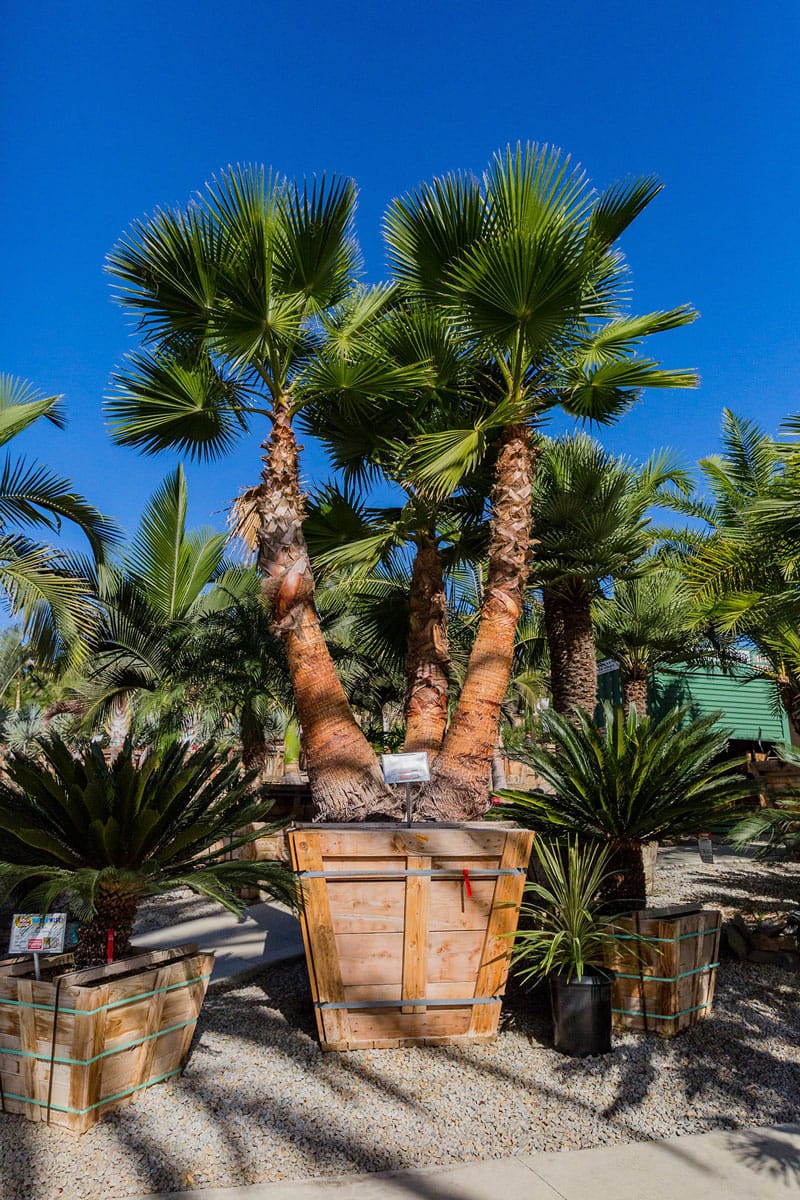mexican palm tree root system
This is known as a taproot system and the roots that grow out are thinner than the main root. Palm Tree Roots They do not have long deep taproots like some trees oak for example.
Mexican Palm Growth and Care Guide 1.

. The roots of palm trees can also be easily recognized because they are very distinct. This is known as the root initiation zone. There is a specialized area around the base of the tree where the roots continue to grow and die off.
The roots stay thin and regularly regenerate. Once the root system is established it can tolerate wind and drought. The palm tree root system tends to absorb moisture from the soil and keep the plant hydrated.
The trunk is stocky and robust. Because palms tend to have heavy fronds and trunks the numerous roots act both as anchors and feeders to sustain the growing plant -- even trees taller than 50 feet do not use a taproot system. Instead they grow dozens of very thin roots that grow outward horizontally from the tree base.
The maximum depth that these roots can penetrate is about 36 inches. Mexican Fan Palm Tree. The Mexican fan palms roots respond well to a moist well-drained environment.
The Queen palms root base is known as a noninvasive type so the tree is popular to plant around swimming pools and walkways. Caring for Your Palm Once the Mexican fan palm is successfully planted it will need a thorough watering. Mexican Palms are hardy in USDA zone 9-11 and sunset zones 8-24.
Palm trees use a root-initiation zone as their main root production center. The fibrous root system grows horizontally instead of vertically to support a tree. Dicots have woody roots and in most dicots 80 percent of the root system is within the top two feet of soil.
Lay the palm tree down on the ground next to the planting hole being careful not to damage the fronds. Carolina cabbage palm Sabal palmetto is similar but Mexican sabal is shorter and stockier with much longer arching leaf stalks. For preventing the plant from yellowing the roots of the palm trees absorb essential minerals like manganese iron and magnesium.
Palm trees have a fibrous root system with the roots growing shallowly at a depth not exceeding 36 inches deep. Dig a hole twice as wide and the same depth as the root ball or the nursery pot the Mexican fan palm is in. Sunlight Plant your Mexican Fan Palm in an area that receives full sun 6-8 hours of direct sunlight per day.
Usually the regular root system has one main big root from which many tiny roots reach out beneath the soil. The best soil to use is one that contains clay or loam and it may be acidic or alkaline. Palm roots arent like those of regular trees in that they are about the same length from beginning to end.
Located just underneath the soils surface this zone generates thin roots that grow within the top 12 to. Palm tree roots are fibrous. Roots of palm trees grow in thin strands from the base of the trees root ball.
Lift the Mexican fan palm by the root ball and place it in the center of the hole. It prefers sunny sites with acidic soil. The roots conduct water and minerals upto the trunk or stem to keep the fronds fresh and green.
Its common for these roots to be visible above the ground. Best wishes with your garden. What does the root system of a palm tree look like.
As the tree grows the roots spread wider but only usually as wide as the fronds which can. They stabilize and anchor the palm and grow into soil for sources of nutrients and moisture. I cant say whether or not the roots will interfere with your septic system - it depends upon how close you plant your palm.
Two palms in the Brahea genus have low root damage potential. The roots grow along with the tree by spreading themselves horizontally across the soil. Roots form a root ball from the origination zone.
Place the palm in the hole you will likely need someone to help you with this part and shovel the dirt back in tamping it down to remove air pockets. Like to somewhere down around the tectonic plates. Keep the soil moist but well-drained watering more in times of drought and less when there is rainfall.
Watering Water your Palm 2-3 times per week for the first month then once a week for the remainder of the first year after planting. They are native to the desserts in Northern. Usually they remain with two feet of the trunk and venture down 3-4 feet.
It is possible however for. Answer from NGA May 30 2006 0 Palm trees typically have root systems that grow down rather than out. Mexican fan palms transplant easily and grow well in full sun to partial shade.
The Mexican Fan Palm Tree scientific name Washingtonia robusta is very popular indoor and outdoor palm because of its striking appearance and cold hardiness which makes it a great choice for landscape in USDA zones 8b-11This is a cold hardy drought resistant and inexpensive palm that doesnt require a lot of maintenance. Regular trees such as Poplars oaks etc. They dont penetrate the soil too deeply but spread out from the trees base like a mat.
All the roots feed on the soil and expand to find sources of water. The bismarkia palm Bismarckia nobilis grows to 70 feet tall and has stiff blue-green fronds that grow in windmill formations around its single trunk. If the soil is too wet the roots may begin to rot.
Of course this is also the most labor-intensive strategy but its a little more bearable thanks to easy-to-dig sandy soils and the palm trees shallow root system. The most effective and environmentally friendly way to prevent palm regrowth is to physically dig up the roots. Dicots have roots that end in filaments that work their way into nooks and crannies which by itself isnt so bad.
Add a small mound of dirt at the root balls edge to hold water. It is best. Anyone who has ever tried to dig up a palm can tell you it has fibrous roots that not only fan out to great distances but also go down deep.
Mexican sabal prefers moist soil especially when newly planted. The root system of palm trees is fibrous. Mexican Palms are large trees often growing up to 30 feet on average.
Even the tallest of palm trees including the Washingtonia Robusta or Mexican Fan Palm which can grow up to 100 feet will have the same width of root system as a much smaller palm tree. Plant fan palm trees 6 to 8 feet apart to prevent the root balls from entangling in the soil. They grow horizontally and remain narrow even as the plant grows taller.

California Fan Palm Beautiful Tree Fan Palm Washingtonia Robusta

Palm Tree Roots How Deep Do They Grow Facts Gardenine

Seeds Of This Washingtonia Robusta Or Mexican Fan Palm It Has A Single Gray Washingtonia Robusta Mexican Fan Palm Tropical Backyard

Pin On Plant Profiles Portraits

Windmill Palm With Hairy Bark Backyard Plants Plants Windmill
Care Washingtonia Palm Tree How To Grow Up And Fight Diseases

Quality Phonenix Dactylifera Medjool Palm Trees At Low Price West Coast Trees Palm Trees Cold Hardy Palm Trees Budget Backyard

Pin On Succulent Garden Plants

Types Of Palm Trees With Identification Guide Pictures Name Palm Tree Types Palm Trees Landscaping Short Palm Trees

Top 17 Small Or Dwarf Palm Trees With Identification Guide Pictures Palm Trees Landscaping Small Palm Trees Tree Seeds

Fan Palm Care Indoors Tips For Growing Fan Palm Palms

Mexican Fan Palm Tree Pictures Cold Hardy Palm Trees Mexican Fan Palm Palm Tree Pictures

Root System Of Palm Trees Studiousguy

Amazon Com Mexican Fan Palm Tree Seedlings 2 Years Old 4 6 Starting To Fan Out Tree Plants Patio Lawn Garden

Issues With A Mexican Fan Palm Tucson Com

Root System Of Palm Trees Studiousguy

Mexican Fan Palms Arizona S Tree Of The Week
What Keeps A Palm Tree From Blowing Over In A Hurricane Quora
